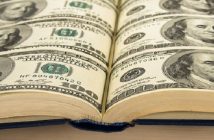While business schools across the world are making efforts to reduce the gender gap by facilitating the entry of more women in MBA program, at the other end of the spectrum is the need to address the pay gap in the job market.
Female enrolment in the early 2000s at many top business schools was less than 25%. Anything more was cause for celebration. In such a situation, there was a paucity of women capable of breaking the glass ceiling. The Forté Foundation that has been actively involved in getting more and more women to enrol in MBA programs, has reported good progress during the past five years.
In November 2017, it reported that 17 of its member schools have reported 40% or more women in their MBA class. In 2013, only two schools had recorded such high percentages. The George Washington University School of Business and University of Pennsylvania Wharton School had reported 45 % or more female representation in 2017.
At that time, Forté Foundation executive director Elissa Sangster spoke of the possibility of 40% enrolment of women at all top business schools in less than five years and 50% by 2030.
It was also found that women’s post-MBA average earnings at the Chicago Booth School of Business, fell below average male graduates’ earnings almost immediately after graduation and grew even more divergent over time.
The progress towards gender parity could be seen from the University of Southern California’s Marshall School of Business became the first major institution in the US to achieve gender parity in its full-time MBA program. Its incoming class of 2020 will be slightly more female than male (52%). In fact, across all full-time MBA programs, women students comprise 38% of the incoming class.
How well do women perform at school? A report in the Forbes quotes an investigation by Jodi Kantor published in the New York Times way back in 2013 had found that women performed equally to men when it came to actual test results but fell behind when it came to the 50% of their grades that derived from class participation.
It was also found that women’s post-MBA average earnings at the Chicago Booth School of Business, fell below average male graduates’ earnings almost immediately after graduation and grew even more divergent over time.
Meanwhile, the Financial Times has quoted data from the FT ranking of the Best MBA programs for women to say that an MBA from a top international business school worsens the gender pay gap. It was found that the women earned, on an average, 9% less than men before their studies. Three years after graduation, the gap had widened to 14%.
ALSO READ: CAT 2018: Registration Opens On August 8, Exam on November 25
The pay disparity varies from country to country. The average salary gap was lower in Schools in China than in the UK, where it ranged from 9 to 26%. Kellie McElhaney, founding director of the Center for Gender, Equity & Leadership at Haas School of Business felt that business schools should do more to highlight the challenges women face in the workplace. Interestingly, female MBA graduates from the Haas class of 2015 reported they were earning 3% more than their male peers three years later.
Elissa Ellis Sangster, executive director of Forté Foundation said more data was need on the kind of jobs women chose before and after their degree to help improve understanding of the MBA pay gap. One possibility was that more men begin their careers in better-paid sectors and were in a position to bargain for better salary packages post MBA. (Image Source: google.com)




